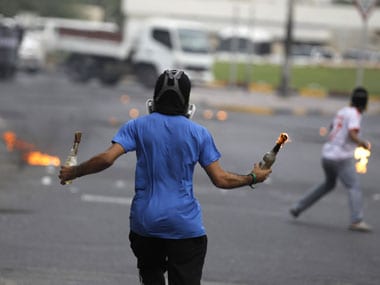


Sati Pratha is the immolation of a Hindu widow on the funeral pyre of her deceased husband. Once moksha (liberation) is attained, the soul will be absorbed into Brahman, the divine force and ultimate reality.īefore we talk about the funeral traditions, cremation ceremonies, rituals & significance and how these rituals have helped the family members to cope with loss, it is important to know about when husband dies first in Hindu culture.
INDIAN BURN BODY FREE
The ultimate goal for many Hindus is to become free from desire, thereby escaping rebirth and attaining moksha, the transcendent state of salvation. Hindus believe that life and death are part of the concept of rebirth.

Cremation of the body has to occur within six hours of the person’s death in the simplest ceremonial way. It is an ancient and widespread practice. Cremation is the disposal of a corpse by fire. The humor is an Indian burn of the mind, the observations of straight, sharp, what-the-hell Cleo rubbing against the phony hurly burly of the big-bucks entertainment monolith and the glitzspeak of the overstuffed weirdos who constantly are taking runs at her in the book.In Hindu religion, fire is considered a sacred gateway to the spiritual world. author Donald Richard DeLillo (born 1936)-review by Roger Director, published in the Arkansas Gazette (Little Rock, Arkansas) of Sunday 14 th December 1980: Less dangerous, but equally painful, is a ‘Chinese burn’, also known as ‘Chinese torture’ and ‘Chinese twist’ (in the United States ‘Indian burn’ or ‘Indian torture’), in which the perpetrator clenches the victim’s wrist with both hands and ‘twists both ways at the same time, like wringing the dish cloth’.Ī figurative use of Indian burn occurs in the review of Amazons: An intimate memoir by the first woman ever to play in the National Hockey League (New York: Holt, Rinehart and Winston, 1980), a novel by ‘Cleo Birdwell’, pseudonym of the U.S. The term occurs in the following passage from The Lore and Language of Schoolchildren (Oxford University Press, 1959), by the English folklorists Iona Opie (1923-2017) and Peter Opie (1918-1982):
INDIAN BURN BODY SERIES
This involved a series of punches, as hard as possible, in the muscle of the upper arm until a kind of paralysis set in. There was old-fashioned arm-twisting, frog-marching, there was The Drill, the Hammerlock, the Toe Lock, there was a charming thing called Punching the Muscle. This was done by placing the palm against the newly haircutted back of another kid’s neck and pushing up against the grain. One hand twisted clockwise, the other counter. This consisted of grabbing another kid’s wrist in one’s two hands, placed close together. Norton & Company, 1957), an evocation of childhood by the U.S. The variant Indian wrist burn occurs in “Where Did You Go?” “Out.” “What Did You Do?” “Nothing.” ( New York: W. He twisted Otto’s wrist in an Indian burn. Otto’s hat tumbled to the ground and he gave it a gratuitous kick into the shadows. “All right, drop it or I’ll break your arm.” In an instant he was across the distance between them with his hands on Otto’s wrists. The term then occurs in the following passage from The Lion and the Honeycomb (Boston: Houghton Mifflin Company, 1954), by Siegel Fleisher: Judy managed to hang Juanita in the rope upside down for two minutes but paid for her tactics as Juanita developed rope and Indian burn and dropkicked the blonde Canadian out of the ring and into the laps of several gentlemen who were not too pleased acting as breakfalls for Judy. And, despite suffering severe punishment from Rae’s wrist grip and Indian burn-four minutes straight at one stretch-he threw the New Englander with a leg bend and body hold after 21 minutes and 20 seconds.Ģ-: A wrestling match between Juanita Coffman and Judy Kawal-account published in the Estherville Daily News (Estherville, Iowa) of Friday 4 th April 1952:įull blooded Oklahoma Indian, Juanita went on the warpath after Kawal, from Canada, performed an Indian rope trick by suspending and unending Juanita in the ring ropes. He was no Paddock on his feet, of course, but he moved around with surprising agility and grace for a big man. The first two occurrences of Indian burn that I have found are from accounts of wrestling matches:ġ-: A wrestling match between Tor Johanson and Tommy Rae-account published in the Binghamton Press (Binghamton, New York) of Wednesday 5 th May 1937: The allusion is to the fiendish methods of torture attributed to the ‘ (Red) Indians’, i.e., the Native Americans. This term occasionally occurs in extended use. A synonym of Chinese burn, the American-English term Indian burn designates an act of placing both hands on a person’s wrist or forearm and then twisting it to produce a burning sensation.


 0 kommentar(er)
0 kommentar(er)
